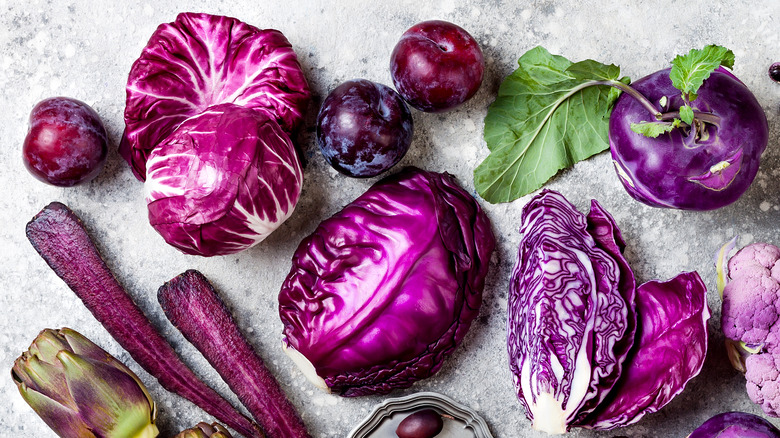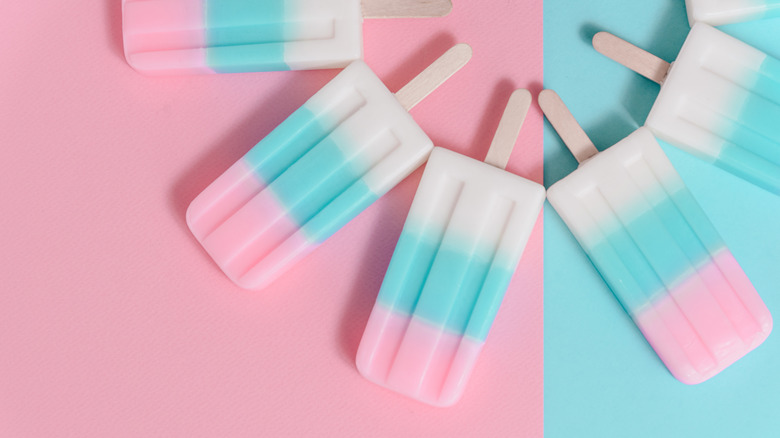Why Red Cabbage Sometimes Turns Food Blue
Red cabbage is that ingredient that adds just the right crunchy texture to your favorite salad or fish tacos. Its vibrant color is so striking and festive that red cabbage can really brighten up any dish it's added to. And while we love its eye-popping hue and perfectly round symmetrical shape, it's also so much more than just another pretty vegetable. According to Sarah's Cucina Bella blog, it's also chock-full of antioxidants, high in fiber, and because of the flavonoid known as anthocyanin (via How Stuff Works), which gives this cabbage its color, it has long been a favorite indicator for chemistry class experiments when studying acids and bases.
Steve Spangler Science explains that anthocyanin changes to shades of red when mixed with an acid like vinegar or to shades of bluish-green when mixed with a base like baking soda. It's this very property of red cabbage that may one day spill over to some of our favorite foods — hello Fruity Pebbles — and help them achieve that beautiful shade of light blue we all love (but in an au naturel way). Per Science Magazine, this vegetable, which hails from the mustard family, may hold the key to creating a natural blue food coloring for our favorite ice creams, beverages, and other food products that we want to turn various shades of cyan.
Most blue food dyes are synthetic
Rebecca Robbins, senior principal scientist at Mars Wrigley, explained to Science Magazine, "The color blue is used in more products than consumers realize." Unfortunately, we rely on chemical dyes to achieve this hue when it comes to our foods, and Pamela Denish, a biophysicist at the University of California, Davis shared with the publication that consumers really do not want to put these synthetic ingredients in the foods they ingest. But, surprisingly, naturally occurring blue pigments that can be used to achieve the beautiful light shade of blue that is so appealing are few and far between because they are not stable. Translation: These pigments don't necessarily mix well with other colors so natural light blue is not easy to create.
But scientists feel like natural blue food dye could be happening very soon. A scientist in Brazil is working with beetroot, according to The New York Times, while Pamela Denish has been working on mixing a specific red cabbage anthocyanin with an aluminum ion that apparently may just work. However, Science Magazine tried to manage expectations, cautioning that the amount of this anthocyanin in red cabbage that is being used is so minuscule, it is not necessarily a sustainable solution. C'est le bleu.

